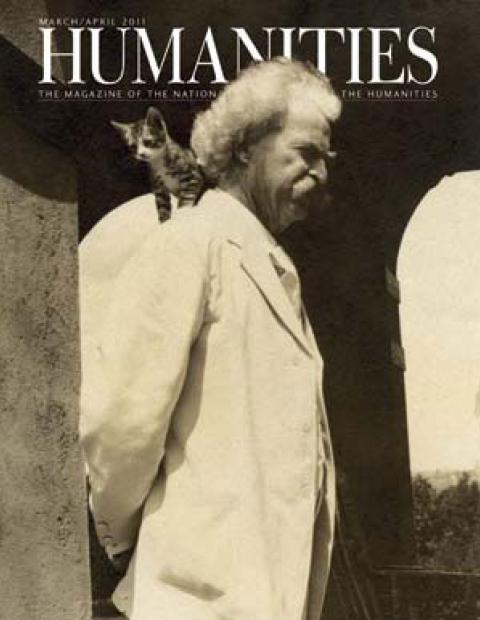Three women in novelist William Faulkner’s life affected his storytelling profoundly through their own literary and artistic abilities. Additionally, one of the three transformed his notions of race. In Judith L. Sensibar’s NEH-funded Faulkner and Love: The Women Who Shaped His Art (Yale University Press, 2010), we get unexpected portraits of two mothers and a wife.
Faulkner’s two “mothers” were Callie Barr, the black woman who greatly assisted in raising him and his siblings, and the woman who gave birth to him—Maud Butler Falkner (William later changed the spelling of the family name). Furthermore, as Dante with Beatrice, the young novelist saw his beloved marry someone else. Unlike Dante, though, he did eventually marry the girl next door, Estelle Oldham.
In considering the influence first of William’s mother, Sensibar quotes Maud from interviews she granted in the 1950s: “After breakfast ‘if I feel like painting, I leave the dishes and go at it. If the spirit is moving, I paint right on through dinner. But once I get tired, I just walk out and leave it.’” Maud’s painting, though, didn’t influence William’s work aesthetically. “This notion of imagination as a gift,” however, writes Sensibar, “echoes in Faulkner’s response to being asked about his work and habits: ‘I write when the spirit moves me and the spirit moves me every single day.’” Maud also loved books. She would lie under her children’s beds with a lamp when they were sick and read to them. She belonged to a book discussion group on current American fiction, and, according to library records, she checked out works by Tolstoy, Dostoyevsky, Chekov, and Turgenev. “Maud was reading Lady Chatterley’s Lover in the bathtub,” writes Sensibar, “when she had her final stroke.”
For years before Faulkner the novelist became fully fledged, Faulkner the poet was trying out his wings, and it was then that Estelle Oldham exercised her own influence on him. She wrote short stories during her first marriage and commented by letter on William’s poetry and fiction. She also contributed to his artistic vision by sharing his fascination with photography and theatrics. Estelle and William were married in 1929 after his early literary successes.
Among the women he loved, however, the greatest influence on Faulkner the mature novelist came from Callie Barr, the African American who told him stories and took him early on to black churches and boisterous jook joints. He had privileged entrée into another world, one that ran counter, certainly, to many Southern whites’ concepts of accepted behavior for African-American women. Callie also alerted William, Sensibar writes, “to the hypocrisies that his fiction often critiques.” Callie Barr and William Faulkner’s entwined lives both conformed to and reacted against deeply entrenched Southern custom, and in so doing helped erode at least some of the false boundaries between black and white.

